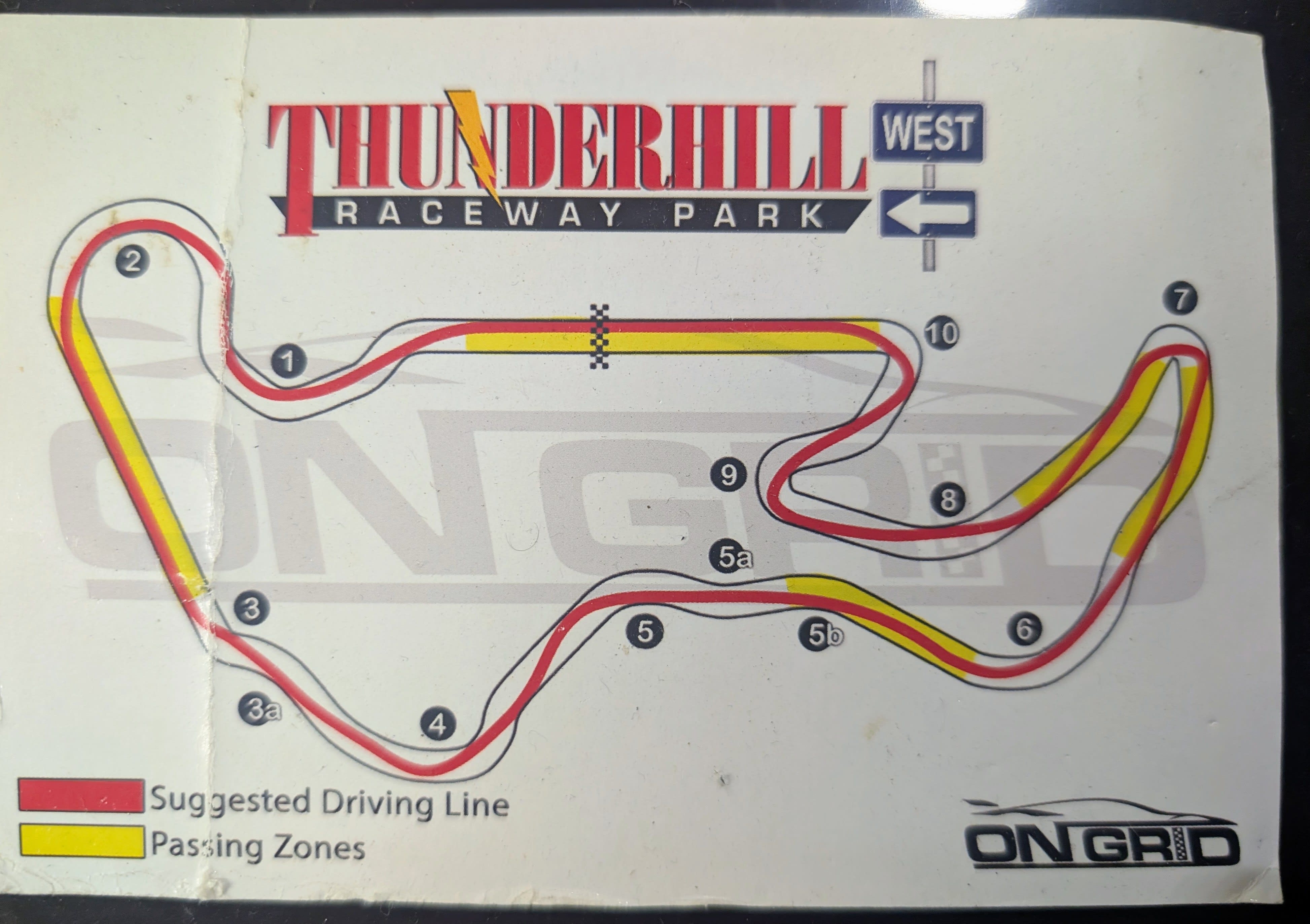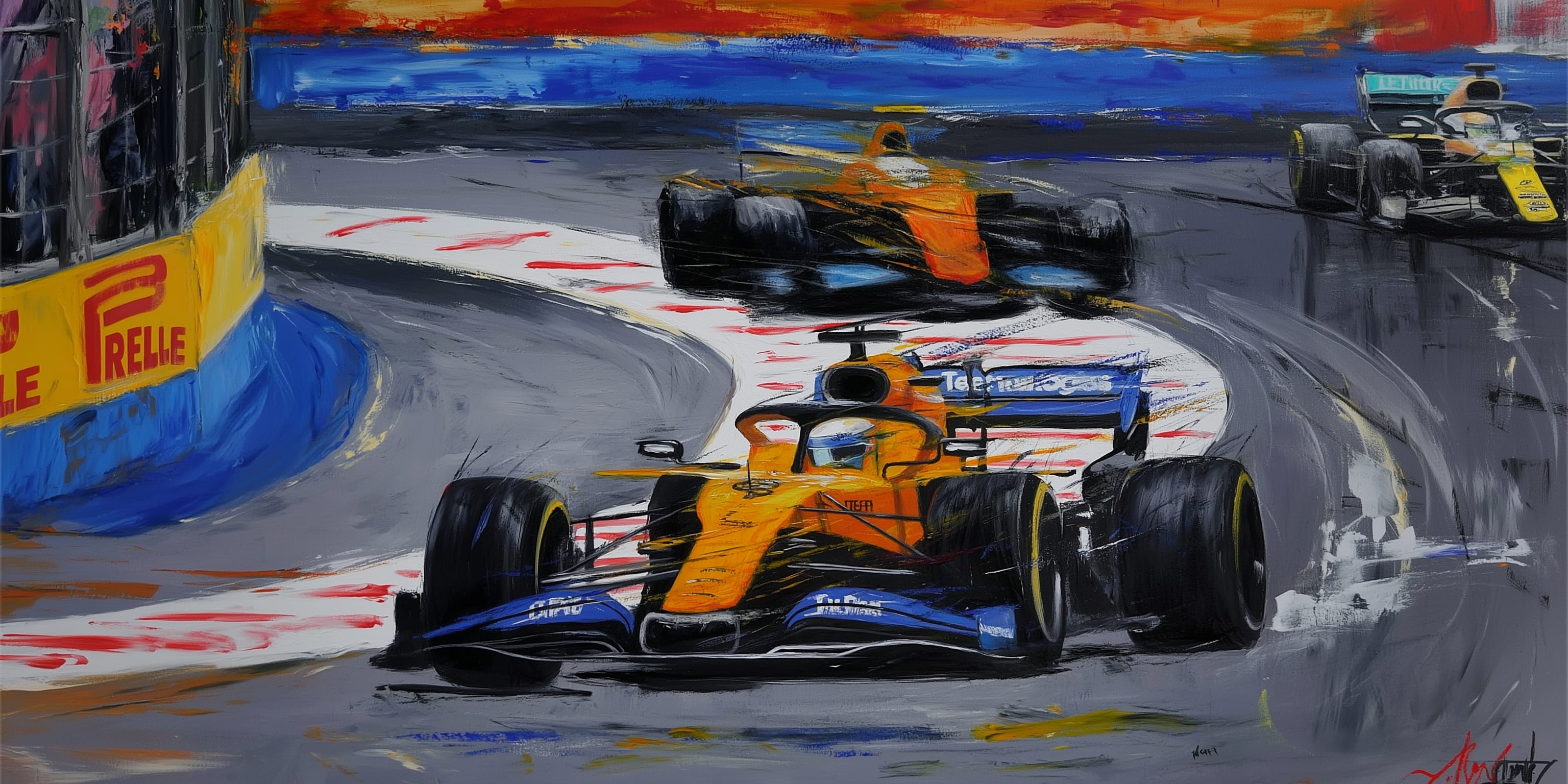High performance driving = motorsport = racecar driving
Even if you have a license and drive a car, you probably don't understand what is hard about racing. I think the answer is interesting (in general I think knowing why things are hard is interesting, but this is my hobby) and it's further interesting to think about why people don't get the difficulty.
Motorsport is interesting because (1) people have a lot of experience with the adjacent activity, namely regular driving, (2) few people have experience with the actual thing, and (3) even if you watch someone doing it, you will probably still not understand where the challenge lies.
By (3), I mean if I were to show you the hand and foot movements of a racecar driver doing their thing, you wouldn't understand the difficulty[1], unlike if I showed you someone pole vaulting for the first time, where I think most people could intuitively see the challenge. I'll come back to this.
Ok, so what's hard? Where does the challenge lie?
We can work backward from the goal. The goal in motorsport is to get from one location to another location in as short as time as possible. It's a race. How do you do that?
I will mostly focus on the challenges for the driver but will make mention of the engineering challenges too.
Finding the best path (not the hardest thing)
Naively, you might say the key thing is to take the shortest path. Not quite. The literal shortest path is not actually the fastest path, because the shortest path will involve sharper turns which require slower speeds. Better to travel 100m at 100km/h than 80m at 75km/h.
So one of the skills, and not really the hardest one, I think, is determining the best path (or "line") to drive along so that time taken is minimized. Though if this is a race, where you should drive is enormously determined by the other cars, and it's not just about minimizing time. I should amend and say that in a race, the goal isn't minimizing overall time, but ensuring your time is smaller than anybody else's.

Minimizing time = maximizing velocity = maximizing acceleration
At the heart of motorsport, where you're trying to get somewhere as quickly as possible, is trying to always have the highest velocity possible, which means always try to accelerate as quickly as possible.
And it's essential to understand that acceleration doesn't just mean forward. Outside of drag racing, races take place on tracks/courses with turns. That means lateral acceleration matters. And because turns can't be taken at the same speed as you reach on the straight section of the track, this requires braking, i.e. accelerating backwards. So in motorsport, you need to maximize acceleration in all four directions.
The casual observer knows that forward acceleration depends on engine size and horsepower. The other directions of acceleration depend on... well, mostly how grippy your tires are. Tires are a big deal.
Now, . Maximizing acceleration means maximizing forces. And barring wind resistance and being knocked by other cars, all of the forces which accelerate your car (in any of the directions) are transmitted via your tires. Doesn't matter how big your engine is if your tires can't get enough traction (aka grip) to put that power down.
To a first approximation, motorsport is the art and engineering discipline of getting the greatest forces possible out of your tires.
And really, so much of motorsport is just the implications of this goal. Getting the greatest forces from your tires.

Driving at the limit
Driving at the limit is my favorite term for motorsport because it conveys the essence of the challenge. Getting the most from your tires is not analogous to pushing your accelerator all the way down and seeing how much you get.
Imagine you're soaring down the racetrack on the straight section, you're at 200km/h, and there's a 90-degree turn ahead with a 150m radius. It would require 2.1G of lateral force to make this turn at 200km/h. Your tires – at their current temperature, air pressure, wear levels, and in combination with the current ambient temperature and amount of downforce you are experiencing – could exert a maximum of 1.8G.
What happens if you attempt to take the corner at 200km/h and request 2.1G from your tires when they cannot offer more than 1.8 is that you will fail to make the turn and likely end up sliding off the track and into the wall of tires placed to cushion people who asked too much.
"I don't want to fly off the track!" you cry, "I shall request at most 1.6G to be safe". That's great and all if you're visiting your grandma. This is racing, though. Suppose you're in a spec race where everyone has equivalent tires. You request your safe 1.6G from the tires and someone else requests the full 1.8G they can provide. They will get through the turn faster. You will take the turn at 175km/h and complete it in 4.86s, they will go at 185km/h and get there in 4.58s. In motorsport, victories are measured in tenths of seconds.
So the challenge is getting everything your tires can provide – but not asking for more. Ask for too much, you crash. Ask for too little, and you lose to the guy who was better at asking for more.
How to get everything available
Getting everything your tires could provide is a multifaceted skill.
A Rubbery Sixth Sense
First, a skilled driver learns to sense how much grip is available. It's some kind of interesting vestigial sense you build up and you can feel it. I can't quite describe what I feel or how I learned it, but I know when I'm safely within available grip and when I'm pushing it. I'd guess some of this is feeling something in the car's movements and some is learned from experience of which levels of felt G my car could handle and which had me losing traction.
Asking nicely
How much force you can get from your tires is actually highly dependent on "how" you ask for it. "Slow is smooth, smooth is fast" we are told. Or more importantly "smooth is glue".
If you jerk the wheel suddenly, demanding 2G of force, your tire might refuse. If you coax it slowly, building up 1.7, 1.8, 1.9... it might give to you. Tires don't like sudden "inputs". Inputs are what we refer to as your motions of the steering wheel and pedals. Smooth inputs. You don't want to upset the car. That's the technical term used. We're not talking about it's feeling, we're talking about it's "balance". Don't upset the apple cart. The best drivers are incredibly smooth.
F1 driver, Carlos Sainz, is known for singing "Smooth Operator".
Timing & Precision
In a dozen ways, being fast is about getting your timing just right and the intensity of your inputs just right. When to brake, when to turn, when to accelerate. How much to brake, how much to turn, how much to accelerate.
If you brake before it was necessary to decelerate enough to make a turn, then you were traveling slower than you could, and the other guy might beat you. If you brake too hard, you overslow. You brake too little, you screw up the turn.
You turn too soon, then you slow down too much or end up the in the wrong place, either way you lose time.
You accelerate too hard too soon and your car might lose traction and spin. But again, you want to get to the limit. The maximum possible without going over.
You are trying to hit very narrow and moving targets better than everybody else can.
Recovery
My above description is false, actually. I've been saying that you are trying to hit the limit without going over. Actually, fast drivers hover at the limit. They oscillate between a little bit under and a little bit over. They rely on their heightened ability to sense whether the tires are slipping and honed skill at "dialing it back" enough to regain grip before they lose control. On average, they are at the limit.
They find the limit by probing for it, dancing at it.
Tires are rated for "progressively breaking away", i.e., they take a moment to gradually lose grip and give drivers a chance to sense it and correct, or being difficult advanced tires that are faster yet lose grip suddenly.
Stay tuned for part 2
Ah, there is yet more to say but this has gotten long enough already. I'll split into two posts.
Tomorrow we can talk about:
- How motorsport is a literal balancing act (you must "balance" the car as you drive)
- Your traction budget
- Intentionally going over the limit in order to go faster
- Racecraft
- A sampling of techniques / applications of the theory
- Engineering challenges / what makes a racecar different
- ^
I can show you a video of a racecar driver manipulating three pedals with great speed and ferocity, but why they're doing that would not be clear.